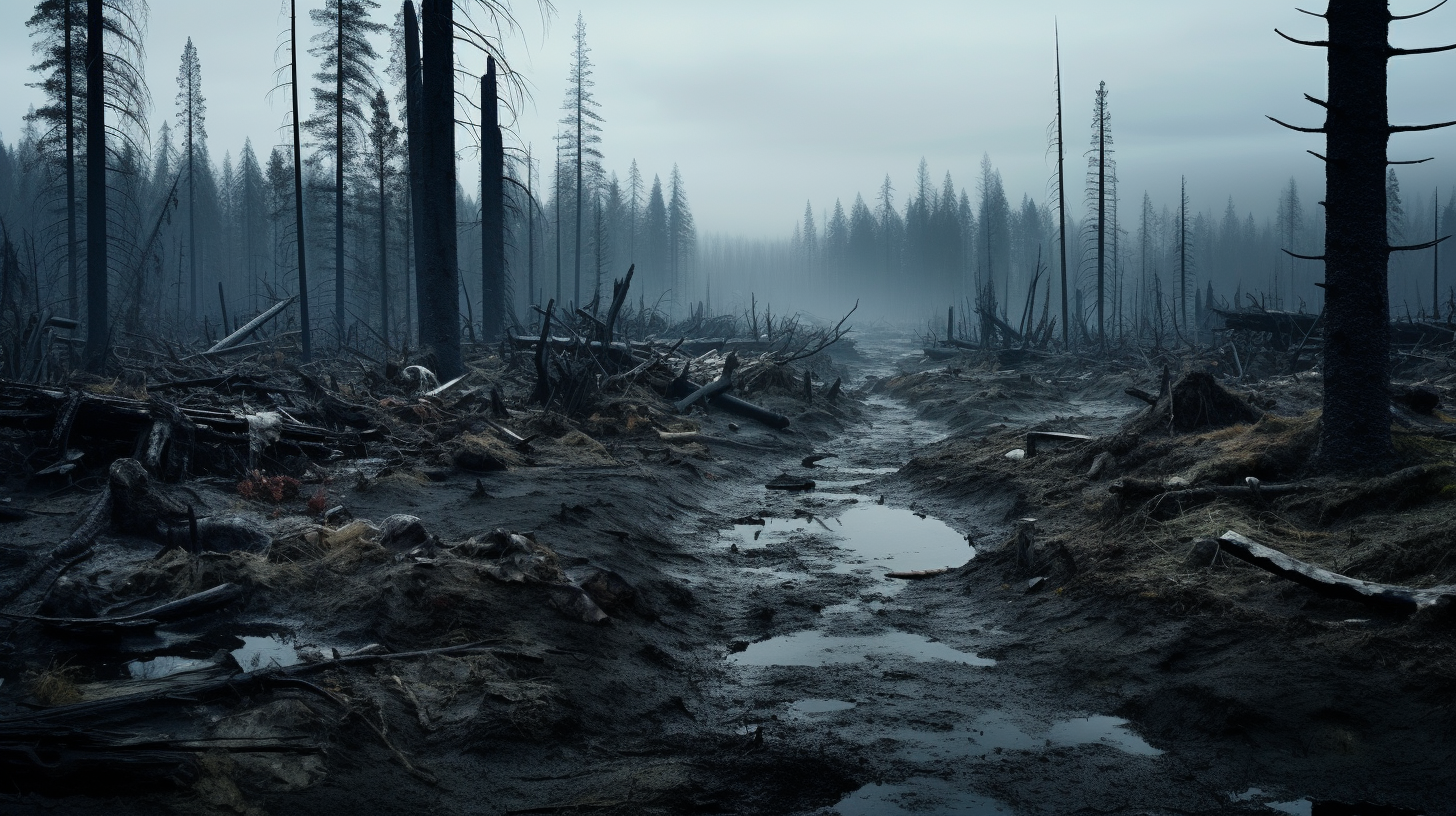As the world accelerates towards a foreboding horizon, the dieback of extensive woodlands carves the epitaph of our era onto the barren landscape. Inviting you into a scene that shivers with the absence of life, we explore the haunting reality of Ghost Forests; the heartrending aftermath of woodland expiration, where silent trees stand as monuments to environmental tragedy.
Bearing witness to the spectral scenes, once verdant groves are now stark, pale stands of timber. Their leafless branches claw at the sky, a macabre dance frozen in time. Birds no longer conduct their symphonies among these boughs, and the forest floor, instead of teeming with the scurry of wildlife, lies still – a barren canvas of decay.
‘Ghost Forests’ are the final gasp of ecosystems pushed to the brink, where saltwater intrusion, relentless droughts, and unchecked pathogens have culled saplings and giants alike. Climate change and human interference have accelerated these scenarios, ones where the whispers of the natural world fall quiet; and in their resonant hush, a portentous message echoes, warning us of what the future might hold if we remain intractable in our ways.
Experts suggest similarities to ‘Inverted Forests’, where aquatic realms swallowed the terrestrial, creating a new paradigm for life too paradoxical to grasp. They weave a tapestry of ecological misfortune. It’s not just trees dying, but the severance of a lifeline for biodiversity, a dismantling of carbon sinks vital to mitigating atmospheric poisons.
Weaving through these devastated terrains, we are compelled to imagine a time when these woods thrummed with diversity. Yet, now we traverse a gallery of ghosts, a testament to what was and a grim diorama foretelling what is to come—forcing us to ask, what once thrived among these fragile pillars? The answer is as disquieting as the silence.
Perhaps in these forests of specters, we perceive the true cost of our environmental abandonment, where symphonies of life are replaced by the unending silence of desolation. A silence that resonates with our previous encounters with ‘Canopies of Silence’ and ‘Gone with the Trees: Silence in the Deforested Lands’, where the complex and beautiful tapestries of ecosystems have frayed and unraveled thread by sorrowful thread.
To avert our gaze from these stark realities is not an option, for the eerie calm that envelopes these ‘Ghost Forests’ is akin to a quietus knell, signaling our own mortality within an ecosystem that is slipping away from our grasp. The plight of these forests is a chilling exhibition, not just of nature’s fragility, but of our own culpability.
As the night cloaks these haunting landscapes, the brittle trunks and twisted boughs cast grim shadows—a dark tableau on the Earth’s surface. Through this, we learn, in somber reflection, the intrinsic value of the wilderness we’ve lost and admonishment against complacency in our stewardship.
Ghost Forests serve not merely as a warning, but as a requiem, the remnants of woodlands whispering their histories into the void. It is a call, not to resurrect the past, which now sleeps eternally beneath our feet, but to protect the remnants of the living world from transforming into echoes of the same dismal fate. They are an urgent incantation for change, and an entreaty that we might heed their wordless caution.
